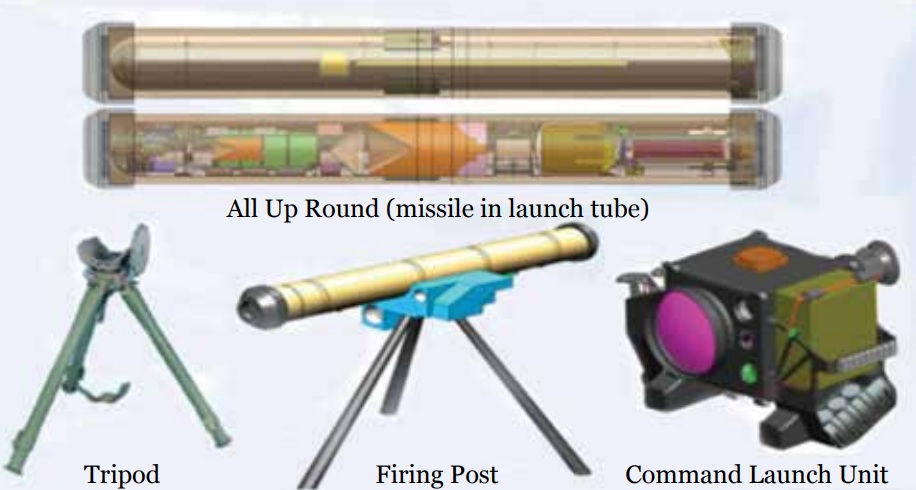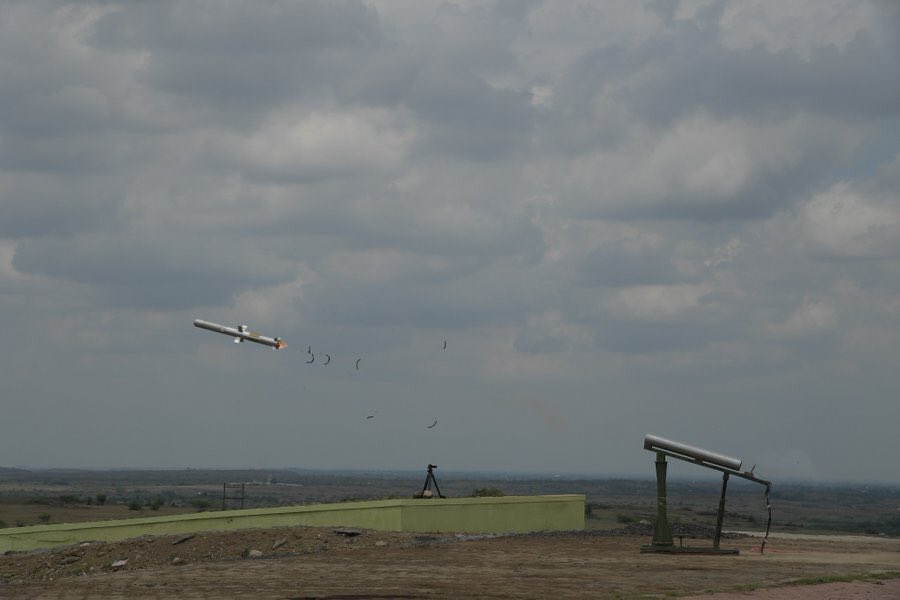
The Indian Army is all set to get its first ever of an anti-tank weapon fully developed and built in India. After decades using weaponry from Russia and France, and with deals with the United States and Israel either collapsing or adrift, in a few months, an Indian infantry team will be operating a comparable Indian-made weapon for the first time ever.
Breaking cover this September with a series of debut test firings, India’s fully indigenous man portable anti-tank guided missile (MPATGM) will be picked up by the Indian Army. A test team will join the development effort for a series of user-assisted flight trials in the first quarter of 2019. These trials will be crucial to fine-tuning the missile system to the Army’s specifications. In the weeks since the system first emerged in public, more is now known about it.
For instance, we now know the baseline MPATGM system sports a range of 2.5 km, not 4 km as earlier speculated. In signature style, the missile’s developer — a cluster of labs under India’s DRDO — has officially declared this month in internal literature that the MPATGM ‘will be comparable to the best ATGM systems in the world, viz., Javelin by US and Spike-MR by Israel.’
The mention of those two systems is no coincidence — India has in the past rejected the Javelin system and continues to dither over a purchase of the Israeli Spike. Since the MPATGM program was sanctioned in January 2015, the DRDO has consistently offered that the system is worth waiting for. The program’s scope includes design and development of a third generation ATGM with a launch tube (LT) and launcher and command launch unit (CLU), demonstration of the system performance through ground testing and flight testing.

A group of laboratories is currently working to complete initial development flight trials before the Indian Army comes on board. The Defence Research and Development Laboratory (DRDL) in Hyderabad oversees the project, and handles missile system studies, control and guidance design and the aerodynamic and structural design and testing. The DRDL receives distributed technological inputs from a list of laboratories include the RCI (Hardwarein-Loop testing and evaluation of control algorithm incorporating sensor package, control actuation system and integrated electronics hardware), HEMRL (propellant for launch motor and flight motor), TBRL (tandem warhead), ARDE and IRDE (target acquisition system).
As with most indigenous weapons programs, the MPATGM is working out technological hurdles. For instance, the DRDO reveals, “The third-generation ATGM having fire and forget capability works on the homing signal provided by a miniature Image Infrared Seeker (IIR) housed in its front end for guidance. Configuring the optical module to focus the image on the detector and realization of the signal processing electronics to achieve the 2.5 km range with the available space within a missile of 120 mm diameter was really a challenging task.”
On the twin September tests, the DRDO says, “Two pre-programmed control missions have been executed to prove vehicle controllability as well as manoeuvrability with realistic guidance command. The missile was successfully tested at KK Ranges, Ahmednagar for maximum range trajectory in top attack mode on 15 September 2018 and for minimum range trajectory in top attack mode on 16 September 2018. The successful missions proved the controllability of the missile aeroconfiguration along with major subsystems, viz., propulsion, control system and onboard integrated electronics hardware.”
A set of guidance missions are expected to be held at the KK Ranges in Maharashtra’s Ahmednagar this month and the next before the team gets down to preparing for joint trials with an Indian Army infantry team.

While the Indian Army has failed to close a deal so far with Israel for the Spike ATGM system, it continues to receive briefings and pitches on hardware from other countries. Most recently, the Army received briefings from MBDA for the MMP ATGM 5 system as a possible man-portable system, as well as for the Future Infantry Combat Vehicle (FICV) and BMP upgrade programs.

Thank you for the information. Indian army is upgrading with new technology. Indian government should also focus on their safety.